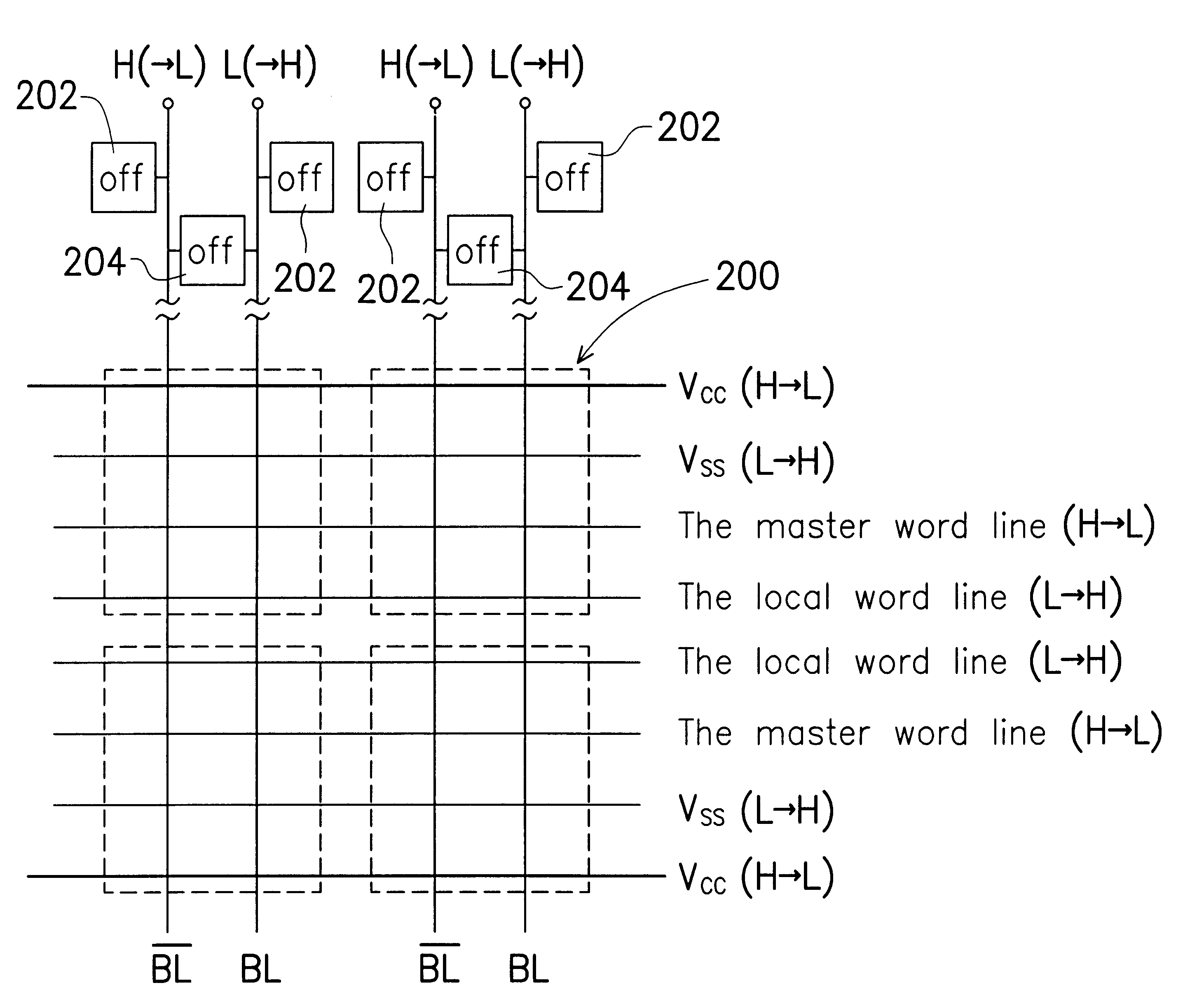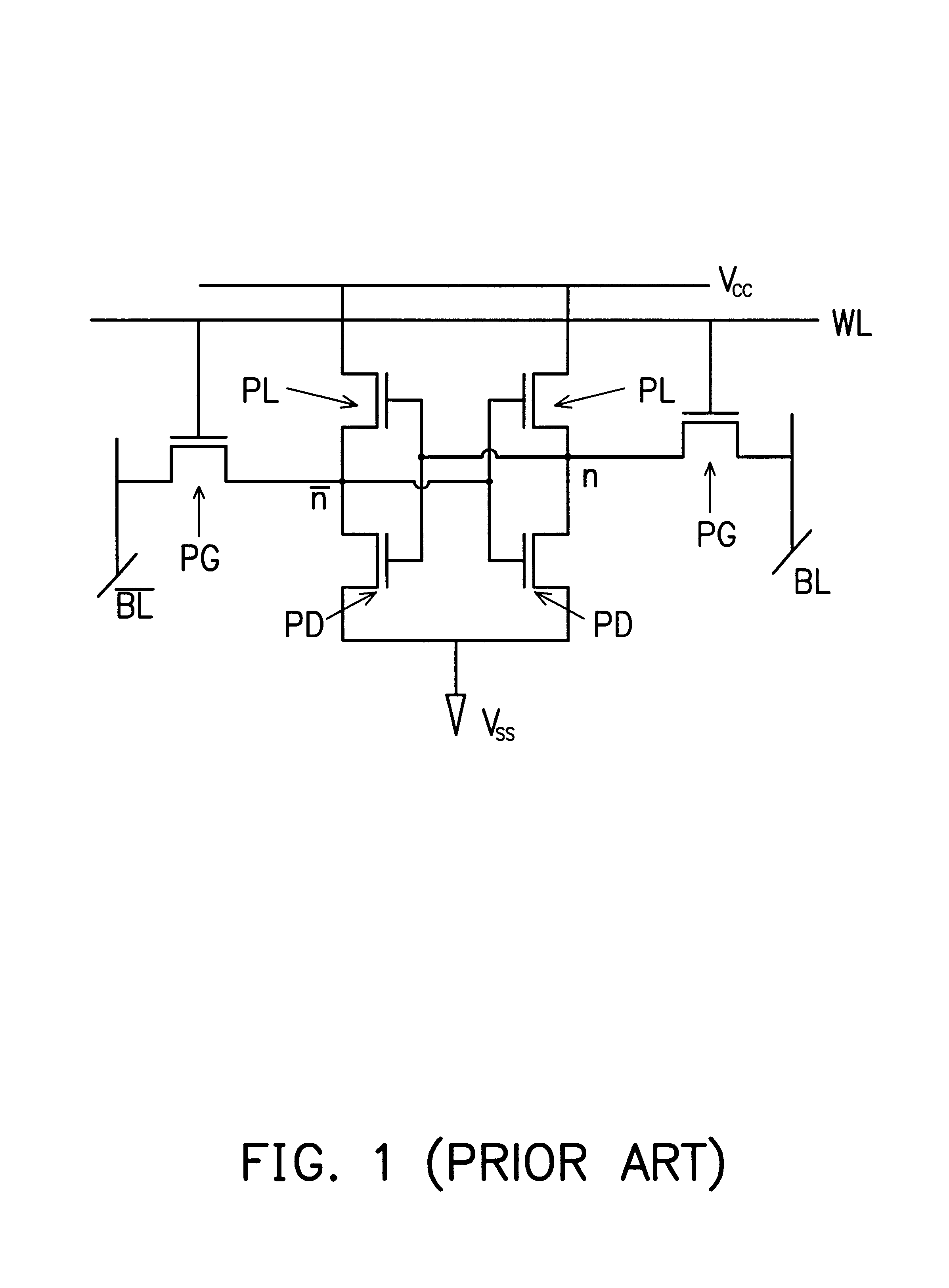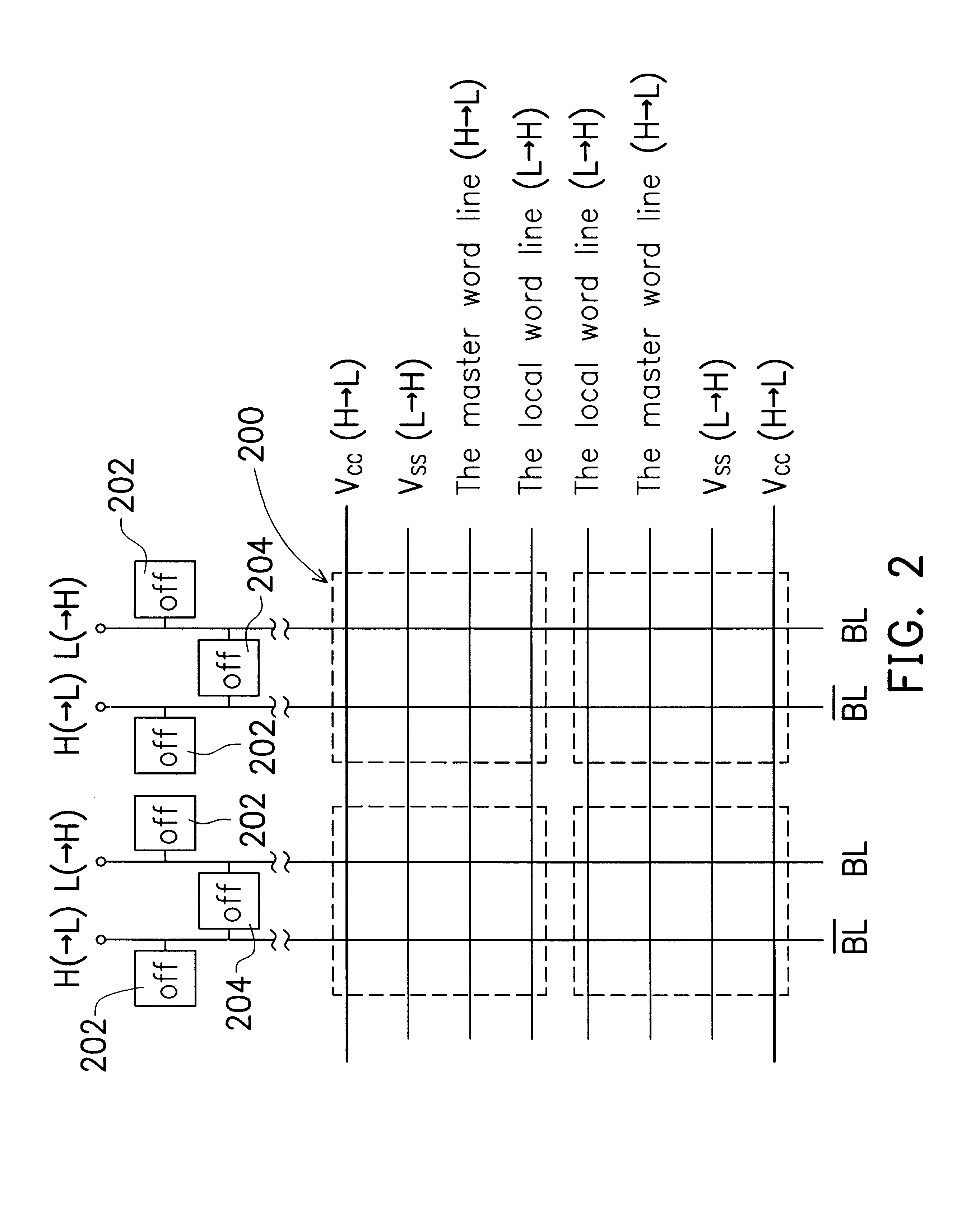Wafer level burn-in of SRAM
a static random access memory and wafer level technology, applied in the direction of individual semiconductor device testing, semiconductor/solid-state device testing/measurement, instruments, etc., can solve the problem of the inability to detect the conductive line in the second place, and the inability to detect the conductive line in the first pla
- Summary
- Abstract
- Description
- Claims
- Application Information
AI Technical Summary
Benefits of technology
Problems solved by technology
Method used
Image
Examples
Embodiment Construction
[0014]Reference will now be made in detail to the present preferred embodiments of the invention, examples of which are illustrated in the accompanying drawings. Wherever possible, the same reference numbers are used in the drawings and the description to refer to the same or like parts.
[0015]FIG. 1 is a schematic circuit diagram of a six-transistor (6T) static random access memory (SRAM) unit. According to functions, the six transistors in FIG. 1 can be divided into voltage pull-down (PD) devices, PMOS load devices (PL) and pass gate devices (PG). The drain terminal of the PMOS load devices PL are connected to a voltage terminal Vcc and the source terminal of the pull-don devices PD are connected to a voltage terminal Vss. The gate terminal of the pass gate devices PG are connected to a word line WL and the drain terminal of the pass gate devices PG are connected to bit lines BL and {overscore (BL)} respectively.
[0016]FIG. 2 is a schematic circuit diagram of the connections between...
PUM
 Login to View More
Login to View More Abstract
Description
Claims
Application Information
 Login to View More
Login to View More - R&D
- Intellectual Property
- Life Sciences
- Materials
- Tech Scout
- Unparalleled Data Quality
- Higher Quality Content
- 60% Fewer Hallucinations
Browse by: Latest US Patents, China's latest patents, Technical Efficacy Thesaurus, Application Domain, Technology Topic, Popular Technical Reports.
© 2025 PatSnap. All rights reserved.Legal|Privacy policy|Modern Slavery Act Transparency Statement|Sitemap|About US| Contact US: help@patsnap.com



